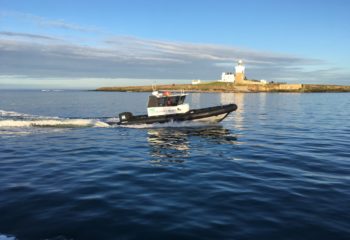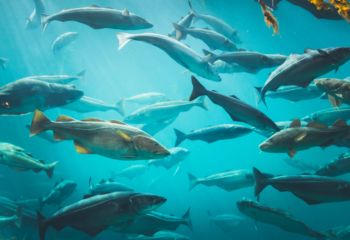Northumberland IFCA has a dedicated team which conducts research into fisheries, and their interactions with the marine environment, to provide evidence to the Authority to make management decisions. Evidence is collected by a variety of means including desk-based studies, surveys, fishing catch data analysis, and partnership work. See our Annual Research Plan and Environmental Risk Register for more information. Below are further details and links to work completed by officers.

Crab & Lobster
The primary fishery in the Northumberland district is potting for lobster (Homarus gammarus) and brown crab (Cancer pagurus), which occurs throughout the year.
NIFCA continuously collects data on the landings and levels of fishing activity through a monthly catch return system. This provides NIFCA with an accurate understanding of the catch quantity and composition of the potting fishery found in the NIFCA district, which helps to highlight and assist with the monitoring of trends in both activity and landings.
NIFCA carry out routine sampling of crab and lobster where we take measurements of individual animals and record other factors such as sex, reproductive condition and any evidence of damage or disease. This sampling work involves surveys:
- On board the fishing vessel working with the local fishing industry
- At wholesalers and on the Quayside when fishers are landing their catch
- And at sea and carry out surveys on a ‘fleet’ of pots they have just fished where we will measure and record all crab and lobster in one fleet.
The data collected contributes to ongoing stock monitoring to ensure a viable fishery within the NIFCA district. The combination of biometric data collected both off and onshore, as well as the monitoring through monthly shellfish activity returns submitted by permitted vessels within the NIFCA district, informs the management of the fishery.
V-notching Scheme
We are pleased to announce this year we have continued our lobster v-notching scheme.
Each year from 2000-2017 NIFCA ran a successful lobster v-notching scheme, through which, over 20,000 female European Lobsters were purchased, v-notched and released into the Northumberland district. Subsequent to the 2017 national prohibition on landing berried hens , v-notching was put on hold, however following feedback from the local industry, it was restarted again in 2024 and is being continued in 2025.
V-notching schemes have been implemented globally and are a widely recognised fishery conservation management tool by both scientific and fishing communities to help sustain lobster fisheries. Their objective is to maintain a healthy reproductive population to provide continual recruitment of lobster offspring to the stock, creating a sustainable and profitable fishing industry.
NIFCA Crustacea Conservation Byelaw prohibits the landing of a lobster with a v-notch cut in its tail, thereby protecting it from the fishery. The annual v-notching scheme therefore contributes to the reproductive potential of our local lobster stocks. The previous scheme was well supported by pot fishermen in the district, many of whom attribute it, in part, to the sustainability of the fishery.
As part of the programme, NIFCA purchase lobsters from the wholesalers which have been removed from the fishery. Before release, lobsters are measured and recorded, then v-notched. This process involves removing a V shaped piece of the exoskeleton from the uropod, the inner tail flap, of lobsters of reproductive size. While the lobster retains this v-notch, it is essentially removed from the fishery, legally protected by national legislation and NIFCA’s byelaw from being landed. As part of the NIFCA v-notching scheme to date, nearly 22,000 lobsters have been measured, v-notched and released across the whole district. In 2024, it was decided that one male lobster would be released for every 15-20 female lobsters. Research has been found that female lobsters preferentially mate with larger males and conservation measures targeting only females risks an imbalance between male and females in the local population. V-nothing a small number of larger males can help maintain that balance, increasing the reproductive potential of this ecologically important species.
As part of the v-notching programme, NIFCA has distributed V-notch pliers free of charge to shellfish permit holders within the district, along with recording forms to capture levels of v-notching carried out by local fishermen. These forms provide valuable information on the levels of v-notching, to estimate the proportion of lobsters that are protected from the fishery and to inform future stock assessments. This aim this year, and for future years, is to encourage this practice again from the local fishermen to contribute to the success of this scheme.
NIFCA would like to extend sincere thanks to the wholesalers involved in the programme, as well as several local fishermen, for providing lobsters, without whom this scheme would not have been possible.
Other pages in this section




